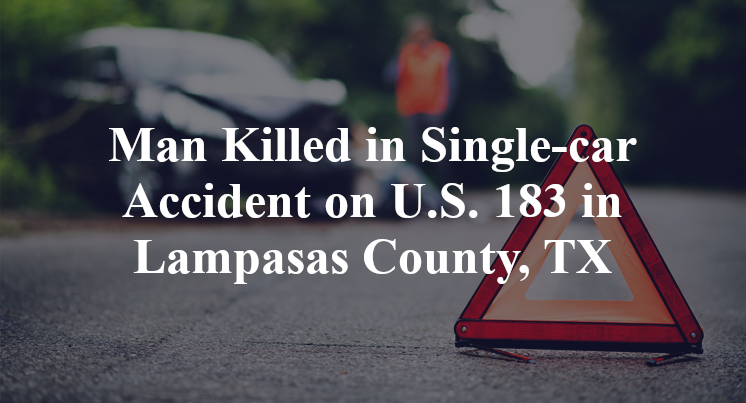Man Killed in Single-car Accident on U.S. 183 in Lampasas County, TX
Lometa, TX — April 30, 2025, an Oklahoma man was killed in a single-car accident at approximately 2:30 a.m. along U.S. Highway 193.
According to authorities, a 19-year-old man was traveling in a southeast bound Ford Mustang on U.S. Highway 183/190 in the vicinity southwest of Lometa when the accident took place.

Officials indicate that, for reasons yet to be confirmed, the Mustang failed to safely maintain its lane of travel. It was consequently involved in a single vehicle collision in which it apparently caught on fire. The man suffered fatal injuries as a result of the wreck, according to reports. Additional details pertaining to this incident—including the identity of the victim—are not available at this point in time. The investigation is currently ongoing.
Commentary
When crashes like this happen—especially single-vehicle accidents in the early morning hours that result in a fatality and a vehicle fire—it’s easy to conclude the driver simply lost control. But in my experience, that explanation often overlooks critical factors that can turn a survivable wreck into a deadly one. To truly understand what happened on U.S. Highway 183/190 near Lometa, three essential questions must be asked.
First, did investigators closely examine the crash site and road design to determine whether external factors contributed to the lane departure? At 2:30 a.m., visibility is at its lowest, and rural highways can present challenges such as limited lighting, sharp curves, or narrow shoulders. If the road conditions weren’t up to standard—due to worn markings, sudden drop-offs, or debris—these could have played a role in the crash. Investigators should have documented the scene thoroughly, including tire marks, roadside obstacles, and environmental conditions.
Second, has anyone explored whether a mechanical failure in the Ford Mustang led to the vehicle leaving the roadway? A steering or suspension malfunction, brake failure, or tire blowout could make it nearly impossible for a driver to maintain lane position—even when driving responsibly. Additionally, if a fuel system or electrical fault contributed to the post-crash fire, that’s something that can only be identified through a detailed forensic inspection of the vehicle before it’s moved or altered.
Finally, has all available electronic data been recovered? The Mustang likely includes an event data recorder that could reveal crucial information such as speed, braking, and steering input in the moments before the crash. This data can help determine whether the driver attempted to correct course and whether the vehicle responded properly. Investigators should also look for GPS logs, surveillance video from nearby buildings, or cell phone data that might help piece together the events leading up to the wreck.
Answering these three questions is critical to making sure that no stone is left unturned in understanding the causes of a crash like this. Serious wrecks deserve serious investigation, not assumptions. Getting clear answers to these questions is crucial for those seeking to understand what happened and why—and it's the least that can be done to help those affected find the clarity and closure they deserve.

*We appreciate your feedback and welcome anyone to comment on our blog entries, however all visitor blog comments must be approved by the site moderator prior to showing live on the site. By submitting a blog comment you acknowledge that your post may appear live on the site for any visitors to see, pending moderator approval. The operators of this site are not responsible for the accuracy or content of the comments made by site visitors. By submitting a comment, blog post, or email to this site you acknowledge that you may receive a response with regard to your questions or concerns. If you contact Grossman Law Offices using this online form, your message will not create an attorney-client relationship and will not necessarily be treated as privileged or confidential! You should not send sensitive or confidential information via the Internet. Since the Internet is not necessarily a secure environment, it is not possible to ensure that your message sent via the Internet might be kept secure and confidential. When you fill out a contact or comment form, send us an email directly, initiate a chat session or call us, you acknowledge we may use your contact information to communicate with you in the future for marketing purposes, but such marketing will always be done in an ethical way.